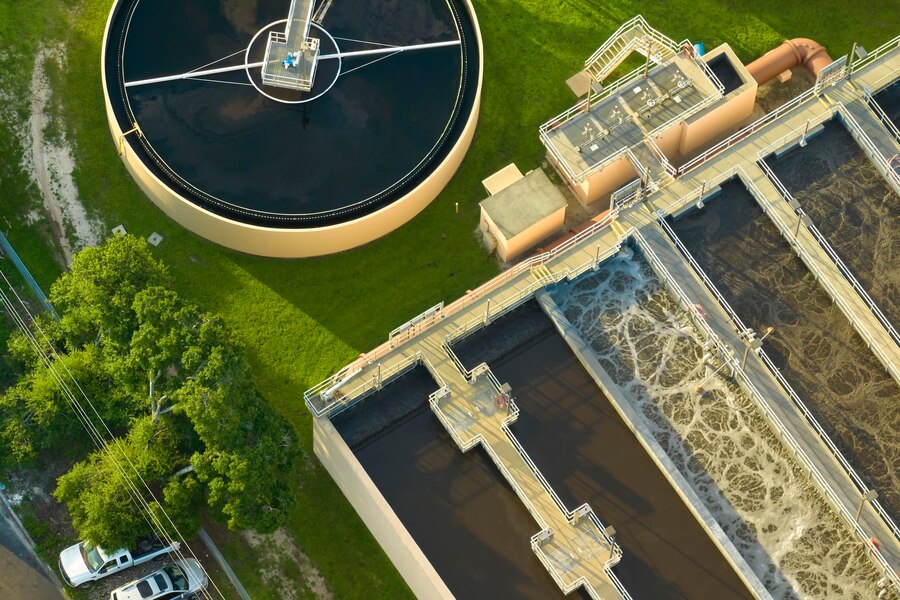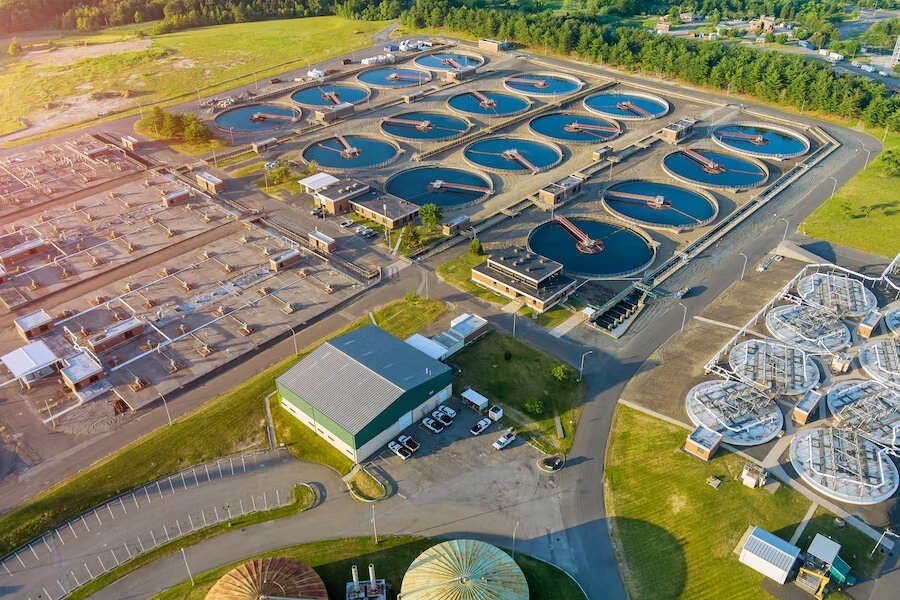What Is A Wastewater Treatment Plant? What You Need To Know
4 Mins Read
Published on: 06 April 2023
Last Updated on: 09 October 2024

toc impalement
Have you ever wondered what happens to the wastewater from your home or business after it goes down the drain? Where does it go, and how is it treated before being released back into nature? The answer lies in a wastewater treatment plant.
This article will explain exactly what a wastewater treatment plant is, why they are necessary, and how these plants function.
The Components Of A Wastewater Treatment Plant

A wastewater treatment plant is a complex system of tanks, channels, and filters that works to purify contaminated water. They have several components that collectively work together to process the waste-laden liquid. Primarily, these parts are:
- Settling basins allow gravity to separate solid particles from liquids to reduce pollutants before they reach downstream processes.
- Aeration systems infuse oxygen into the wastewater so microorganisms can break down organic matter while removing nitrogen compounds and other toxins.
- Sludge digesters use bacteria to convert solids into methane gas for energy production or as fuel sources.
- Membranes remove large particles and microscopic contaminants for further filtration before discharge or reuse.
All these elements combine to form an efficient wastewater treatment plant capable of treating contaminated water sustainably.
The Primary Treatment Process
Treating wastewater begins with preliminary treatments such as screening, grit removal, flow equalization, pH adjustment, and oil & grease removal.
Screening removes large objects, including sticks or rags, while a grit chamber separates sand or gravel-sized particles.
Flow equalization helps balance fluctuations in incoming volume while pH adjustment adjusts acidity levels using either lime or soda ash additives.
Lastly, oil and grease are removed by coalescing mediums like skimmers or separators so they can be skimmed off the surface before being discharged into sewers.
Primary treatment reduces BOD (Biochemical Oxygen Demand) concentration, allowing for further stabilization through secondary treatment processes like biological oxidation systems.
Secondary Treatment Process
Secondary wastewater treatment is a process in which suspended solids and organic material are removed from the water. This step typically follows primary treatment, which involves removing large solid materials.
The secondary treatment process includes biological processes that break down and remove contaminants. These processes can involve bacteria or other microorganisms consuming pollutants, making them less harmful or even non-toxic. Depending on the plant, this process might occur in aerated tanks where oxygen is added to speed up reaction times. Other systems may use lagoons with algae beds to filter out pollutants before they reach rivers or oceans.
Additional nutrients, such as phosphates and nitrates, can also be removed from the wastewater stream during this process.
Finally, what remains after secondary treatment is generally clean enough for it to be safely discharged into nearby bodies of water without harming aquatic life or human health.
Tertiary Treatment Process
Moving on from the secondary treatment process, tertiary wastewater treatment is the final step in a full wastewater treatment system. It can involve chemical or physical treatments to further purify and enhance the water quality before discharge.
Chemicals such as chlorine, alum, polymers, and ferric chloride reduce phosphorous and nitrogen levels, while physical processes like sand filtration remove suspended particles that have survived earlier treatments.
This process also helps eliminate bad odors caused by organic compounds and will help bring the liquid’s pH closer to neutral. Tertiary wastewater treatment plants are usually constructed to meet environmental regulations set out by governing bodies.
The effectiveness of this process depends heavily on how well-designed the plant is and what type of effluent it needs to produce. With proper design, these systems can recover valuable resources from treated effluents which could then be reused in other industrial processes instead of being disposed of into rivers or oceans.
Disinfection And Advanced Treatment
Wastewater treatment plants use disinfection and advanced treatments to remove bacteria, viruses, parasites, and other contaminants.
Disinfectants are chemicals like chlorine or ozone that kill harmful microorganisms in wastewater. Advanced treatments involve physical processes like filtration, sedimentation, and sand filtration to separate materials from the water. These methods can also reduce concentrations of pollutants like phosphorus and nitrogen.
The final step of a wastewater treatment plant is usually chlorination or ozonation to provide extra protection against pathogens before releasing treated water back into the environment.
This ensures a safe environment for aquatic life and humans who come into contact with it. With proper maintenance and operation of these systems, we can ensure clean drinking water for everyone.
Conclusion
The wastewater treatment plant is essential to ensuring our water supply remains clean and safe for consumption. Through a multi-step process, the primary, secondary, and tertiary treatments allow pollutants to be filtered out and disinfected before being discharged into the environment.
The addition of nutrient removal and sludge management allows us to further protect the health of our planet by reducing pollution levels in rivers, lakes, and oceans.
read Also:


















Comments Are Closed For This Article